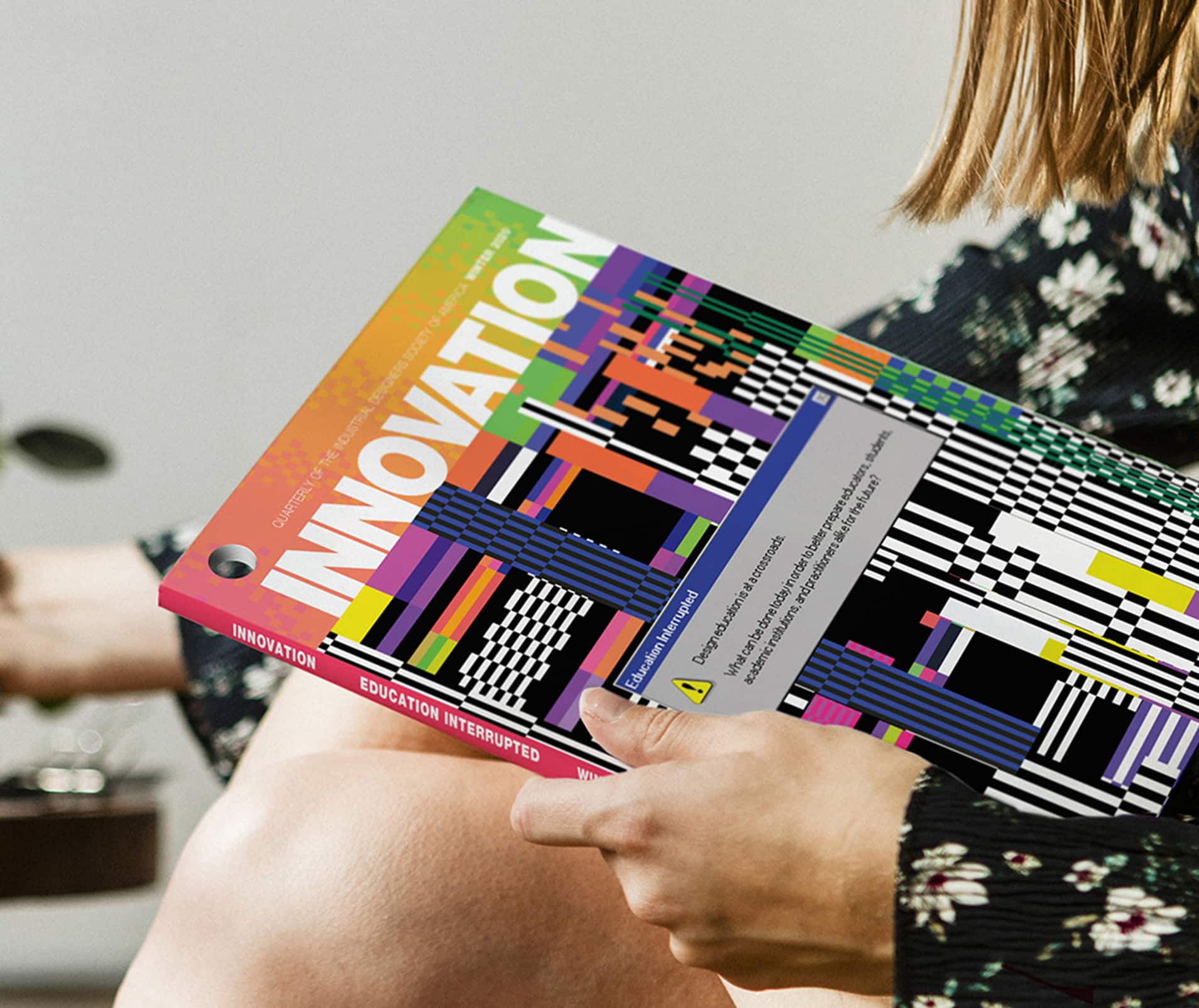Industrial design can be considered a niche proletariat discipline needed for certain aspects of the greater product development process, or it can be considered a manifestation of human creativity with enough explosive power to change perceptions and ignite inspiration that circles the globe instantly. Which would you choose? I recently sat down with Ross Lovegrove to discuss his creative futurism, which continues to shine with bright light.
Scott Henderson: What are you working on now? Can you tell us about your latest projects?
Ross Lovegrove: I am involved with multiple layers of creative engagement, including ongoing projects from the past two years relating to advanced contemporary technologies that facilitate innovation across diverse life sectors. My main focus is related to the fact I am beginning a new program for an electric vehicle this month, for a 21st-century brand that is radically challenging the norm and accelerating us away from fossil fuels toward an intelligent, electric future and circular economy.
Henderson: Do you believe that the human being is capable of true originality, or is the perception of true originality more of an unexpected reconfiguration of existing elements found somewhere in our universe?
Lovegrove: I think it’s important to accept that as the biodiversity of creativity is growing exponentially, and the global sharing of all manner of innovation is so omnipresent, that new ideas will emerge from the convergence of heightened awareness. The view of Earth from space, the beauty of the James Web Telescope, and the wonders that it will enable us to see are so magnificent that we cannot revert to a position of lesser dreams or diminished technological ambition. Scientific design or expression is the ultimate in that it’s profound, visceral, and absolute, devoid of anything extraneous, which places it at the heart of nature, between Earth and the cosmos.
Henderson: Talk to me about your design DNA (design, nature, art). What is the intersection of design, nature, and art, and why is that intersection so critical to developing groundbreaking work in the field of industrial design?
Lovegrove: Industrial design can be formulaic, banal, and insignificant. It can supply a need as a tool and become useful in function, but also be so uninspiring in its physical presence that nobody cares about it. Actual reality and the physical, the 3rd, 4th, and even 5th dimensional potential of form, or just the way light can fall upon an object—how it sits in space or just how important the reverence for material transformation is—can give rise to objects that move us so deeply into our subconscious, opening our minds and sense of being. This is what interests me.
The intersection and triangulation of the three core principles of DNA (design, nature, art) are profound individually, but when fused with shifting nuanced emphasis, they can create an intelligence whereby everything is accounted for: our relationship with the Earth, sustainability, technology, our understanding of its potential and deployment, and then the added expression of art as the overall salvation and primordial input, taking us into the unknown.
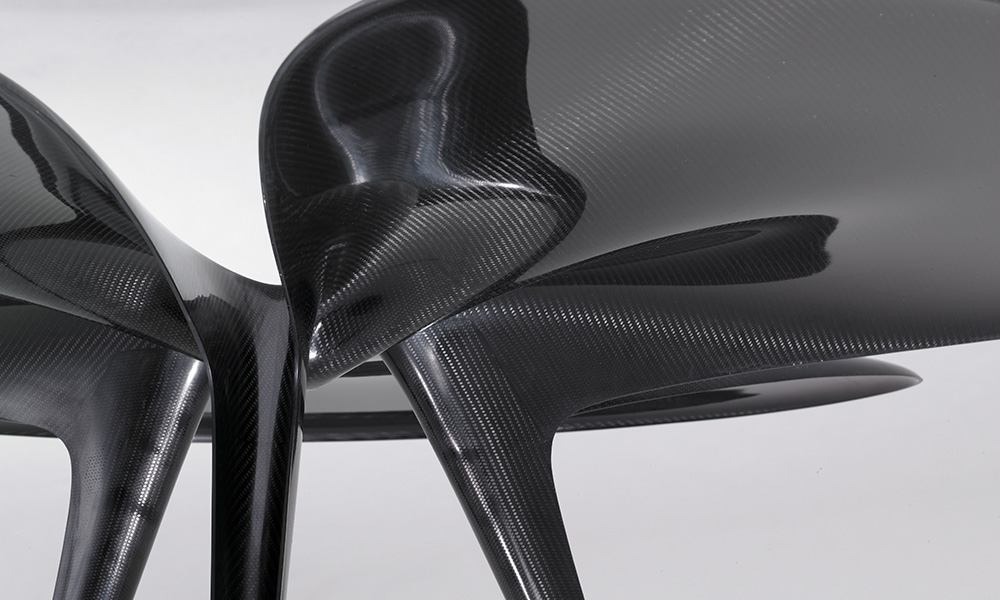
Carbon Fiber Gingko Table (2007) by Ross Lovegrove
Henderson: Do you believe it is possible to tap into your subconscious mind while you are designing? If so, what is in there that you want to gain access to or bring forward?
Lovegrove: Why is it that the first creative impulse often becomes the one that maintains inertia? After years of experience reacting to so many diverse scenarios and typologies in design, one’s mind develops a faster, more reflexive reactive position, a subconscious response that starts deep from within.
To call up one’s memory, one must have a primary reflex first to select the subject. This might be something not cerebral, but a form of specific, selective storage. I often wonder whether we are constantly absorbing and storing and then filtering information that conforms to our own creative DNA and beliefs.
You can tap me on the shoulder, and by the time I’ve looked around, I already have a strong feeling of what something should be, often without any doubts. That’s like a musician who can respond, often effortlessly, change, deviate, and modify a core melody at will, or a painter making marks like Jackson Pollack, with an utter conviction that might initially not make sense to someone else.
Henderson: I recently saw Wes Anderson’s new film “The French Dispatch.” There were many unexpected ideas and thinking throughout this film that a design professional might recognize as hard-to-come-by leaps of creativity. Do you value and search for these unexpected leaps when you attack a design project?
Lovegrove: I like your questions and references. Humans lean forward into the future, and the more that’s fed into the mind, the more ideas can be combined to become explosions of creative energy from whatever their source. I’m fascinated by first objects, uncontaminated by branding, marketing, or salesmanship.
This often takes me back to look at prehistory and archaeology to understand how first responses are so mportant: reactions to materials, survival, and the raw ingenuity I find so vital to be honest and real. Why? Because they are powerful confrontations or releases of energy without pretentious calculation, bringing to life physicalities that because of their directness have soul and associate with permanence, eternity, a space utterly failed by products as temporal artifacts. So my trigger mechanisms are preset because at base I’m willing to fail in what’s expected of me, emphasizing the radical and unexpected first before dilution occurs through rational impact.
Henderson: Some people buy themselves a Ferrari, but you buy yourself things like an exquisitely self-designed spiral staircase. What can you tell the audience of American industrial designers reading this piece about total immersion—living and breathing the role of the designer—as opposed to just showing up for work?
Lovegrove: When I read your question, I see Brancusi fully immersed in his studio, Noguchi, Picasso, and Corbusier or Wright. In design, I see Raymond Loewy, FIDSA, next to models of cars and trains. I also remember visiting Luigi Colani in his workshop in Bern, Switzerland as he modeled a full-size truck without computers surrounded by hundreds of forms and maquettes and images of such singular belief and commitment. Full immersion is the only way so that the references keep soaking back into your mind, never losing sight of who you are or of one’s emotional state and reasons for being. This is the position of an artist, less of a designer. One’s environment becomes a projection of one’s character so that it speaks for you outwardly to others, but also inwardly in terms of self-understanding. In my case, as a designer, one can see clearly a morphological evolution in my work over the years funded by technological shifts in the creative process, from the analog to the digital, from hand to computational process to 20th- to 21st-century industrial evolution.
Henderson: Nature boils away anything extraneous to arrive at the most minimalist solution. Dieter Rams is famously known for stripping away detail for the same goal, and yet his work does not look visually inspired by nature. Yours does. How do similar values and goals yield such dramatically different results?
Lovegrove: I have spent time with Dieter and admire his approach to design with reverence and respect. One time in Tokyo together, he let me try on his spectacles, which were made by a maker in Venice who made the original Le Corbusier design. This did not divert my gaze away from my appreciation of organic form, but I did notice that his cane sported a fabulously anatomic, ergonomic handle. Suddenly the respect was very mutual, and we both conceded.
Forcing form onto things that clearly do not merit it is pretentious. Remember that in the past, form was expensive and time-consuming to create. The turning point in my own process and aesthetic language came out of my Ty Nant water bottle project, resulting in the first digitally-generated commercial product using programs used in orthodontics and facial-reconstruction scanning software. Today, the digital process has also helped take the concept of organic essentialism much further, as we can apply layers of intelligence and explore the incredible potential for complex forms. Their interlocution is best illustrated perhaps by my 3D-printed Ilabo shoes for United Nude.
So the core values of minimalism and restraint are actually very similar between Dieter’s approach and my own; it’s just that I look to follow the contemporary sincerity that technology and process can bring, as I see my work as a contribution to the flora of the natural world, advocating a concerted transition from the mechanical to the biological in an industry that will ultimately be supported by material selection and appropriation at a cellular level and manufacture through four-dimensional growth deposition.
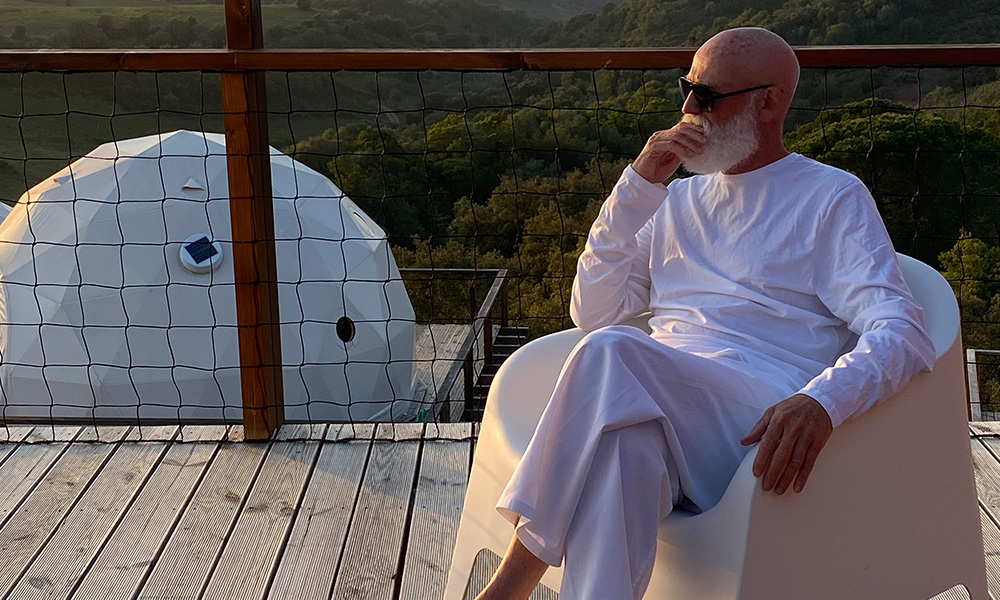
Designer, Ross Lovegrove
Henderson: What do you think of the Post-it note wall (a wall filled with colored sticky notes and a bunch of designers standing around it armed with sharpie markers)?
Lovegrove: I can see the merits of problem-solving this way to search for the best solution; however, this task is best undertaken by an algorithm. In my second TEDGlobal talk at Oxford University, I advocated for a new universal standard of designing that would bypass the idiosyncrasy of human calculation with an algorithm called Lovegrove Genesis. It would form the base code solution of anything by converging everything we know across all aspects of a design’s need, from its draw down on its use of material resources, energy, sustainability, economics, transportation, weight, scale—in fact, everything we can possibly think of—so that the core principles of life and the biosphere are respected and reflected in its conception. Then to achieve biodiversity in a singular-platform universal object, we add a degree of contamination via art, color, and subtle changes in its make-up, no different from the human face with its billions of nuances.
Henderson: “Standing in the Shower Thinking” is a famous song by the alternative rock band Jane’s Addiction. How important is solitude when striving to find a creative leap?
Lovegrove: Everything must start with an individual’s thought, which is then augmented and brought to life by support. Industrial design is a complex process, and that’s why it takes a lifetime of unswerving commitment to understanding how it works and how to use instinctive, spontaneous cross-referencing to innovate and turn speculation into reality.
I’m living in a 500-year-old house that represents the ultimate upcycling. But I still get invited to work for SpaceX and the most progressive corporations in their field, as I’m a committed innovator and futurist who also understands the evolution of design and how we got here. Looking at the Earth from space, it appears so alive, newborn, and modern; so my creative mind can run my fingers over the blade of a 1.8-million-year-old silex at the British Museum and be so lifted to be part of humanity’s journey of ingenuity and making things, while shivering at the extreme beauty of holding a 3D-printed titanium connector with hybrid linear and organic geometry at SpaceX.
Henderson: You mention your admiration of the sculptor Henry Moore. Why does something inherently abstract even need to look right? What makes something that is non-representational and void of any functional purpose look resolved and compelling to a wide and diverse audience in the same way?
Lovegrove: Great question. Does something abstract have to look right? How easily we forget or simply don’t realize the value of the three-dimensionality of the objects that surround us. Great sculptors understood that objects displace space and form a permanent, emotional presence in our psyche. The introduction of a hole, for example, was a way of uniting the surface of a form to maintain a fluid continuum. When I realized this, I created my Eye Camera for Olympus, inspired by a fusion of Hans Arp, Moore, Antony Bonalumi, and, in fact, Mario Bellini, whose Divisuma calculator for Olivetti and studies for Alpha Romeo dashboards using wireframe mapping and thermo-formed sculpting were instrumental in my process back in 1990.
I believe that when a trinity of material and form is achieved, an object can appeal to a universal consciousness that accepts the work as an icon of that particular era. Ideas emerge from within, as visceral reactions to mass, form, space, and intent are released. This way of creating sees the object or product not as a disposal or replaceable piece of landfill, but as an extension of the culture of its creator.
My home and studio are filled with extraordinary objects and artifacts, many of which look right even if there is no way to compare or measure them. They function as reminders of incredible craft, integrity, skill, or, indeed, flashes of brilliance by nature or human nature that would touch a wider audience. Because of the universal consciousness, I am sure that they would be considered extraordinary by many diverse cultures too.
Henderson: Do you believe there is such a thing as universal beauty in design? Can a design be configured where you as its creator literally feel that the design has power and impact and where you know with a high degree of certainty that the majority of others will feel this same power and impact as well?
Lovegrove: Yes, I do. But again, it would arrive from within, not from calculation. The reason I appreciate sculpture as an art form is that it rarely requires description. Its abstraction is often based on principles of which the form is just a host for a more abstract idea. It’s often not about the value or pristine qualities of the material, but more about the message that’s conveyed and the beauty that can be in that message. So if an industrially-designed product can fuse wonderful aesthetics with its function, as we see with space instrument design, that is devoid of styling, then this forms its own, very contemporary categorization of beauty that is incomparable.
Design that does not sell to you, but which has a sort of unexpected authority of otherworldliness or a uniqueness, a sense of being rare or maybe newly discovered, will certainly soak into you and be loved for very personal reasons. The new Olympic torch by my friend Tokujin Yoshioka is astonishingly beautiful and intelligent, as its design is a consequence of such fabulous thinking and, of course, historical importance.
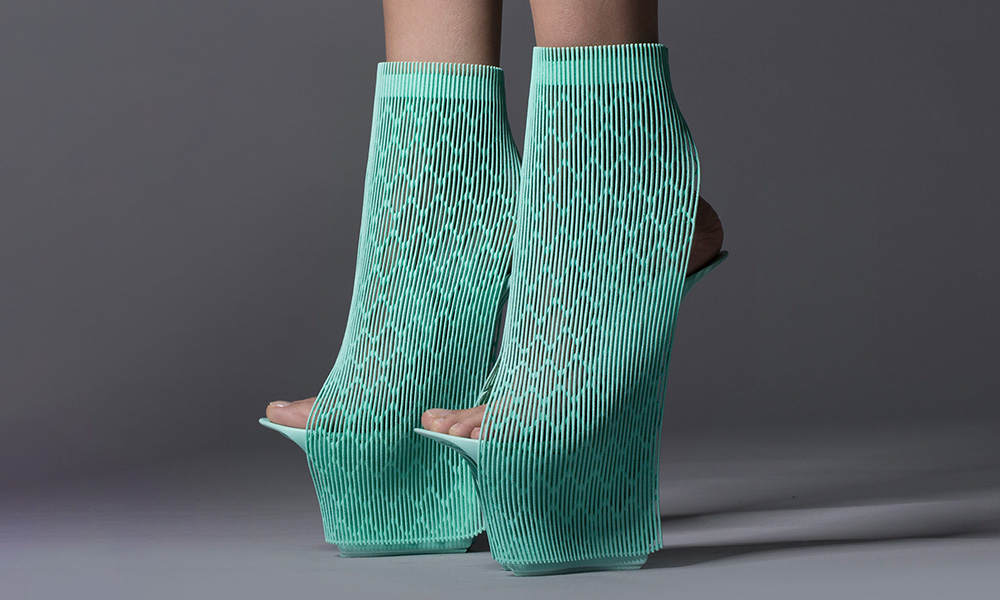
Ilabo 3D Printed Shoes for United Nude (2015) by Ross Lovegrove
Henderson: Michelangelo trapped life, movement, and energy into his work, where it remains as vibrant and potent today as it did 520 years ago. Is that what a successful design can do as well?
Lovegrove: Products form part of life’s animation, and contemporary computational method allows us to look inside, rotate, and walk within, often with a high degree of realism. Often the renders are so perfect that the made product is disappointing. What I have practiced in my studio has been the need to make the actual reality better than the vision, something my DNA staircase retains.
Movement and form bring life to an inanimate object, so I feel that imbuing design with some form of life is respectful to its material sacrifice and entry into Earth’s space. These attributes can be very subtle or, indeed, simply optical in the way they use materials and surfaces. But equally when things feel grown in the way surfaces flow and blend, then another more anatomical quality appears that is closer to your reference to Michelangelo, who had the rare intuition of being able to see forms within a material.
Henderson: Molecular recycling is emerging as a new way to recycle plastic, where the process breaks down the polymers into monomers and then into pellets as pure as the original virgin materials for a true circular-economic cycle. This is opposed to just grinding the stuff up. Perhaps there are solutions to our concerns for sustainability that are beyond the obvious fixes, such as replacing the use of plastics with glass, wood, corn, and hemp instead, which is not realistic for many applications. What is your view?
Lovegrove: Polymers are a byproduct of oil, and oil is a natural substance found on earth, generated from decaying organic matter. Indirectly it’s a natural legitimate material with an extraordinary range of states and properties on which humanity has become dependent. We cannot remove it from our chain, but we can start to treat it as an infinite resource that can have multiple lives, because we can revert it to a molecular level and a closed-loop responsible system. Biological substitutes are emerging in the field of food packaging and elsewhere, but we need a myriad of alternatives derived from scientific research into organic compounds, as well as looking into composites and, indeed, also diminishing our hunger for the perfect or pristine, which along with the solvents, paints, and pigmentation used in car manufacture, just as one example, are contaminating our environment and are a hangover from a 20th-century concept.
Polymers support sophisticated aspects of human life and can be very pure. It’s when they are used for cheap, badly-made products in mass quantities, such as the detritus that pollutes our oceans, that we need immediate, radical reform from the top down to address what is a clearly reversible problem.
Henderson: What is your design philosophy in 40 words or less?
Lovegrove: Notes to self: Remain relevant to the times in which you live in the convergence of all things considered. Be in the present moment. Remember that nothing is a failure, just part of the risk-taking that’s vital to one’s progress. Cultivate one’s power of intuition and instinct from an early age. Remain true to self and be authentic. Establish core principles/beliefs and then spend your entire life until the end driving them home. Don’t waste your time on banal myopia, and don’t present anything to anyone you don’t believe in.
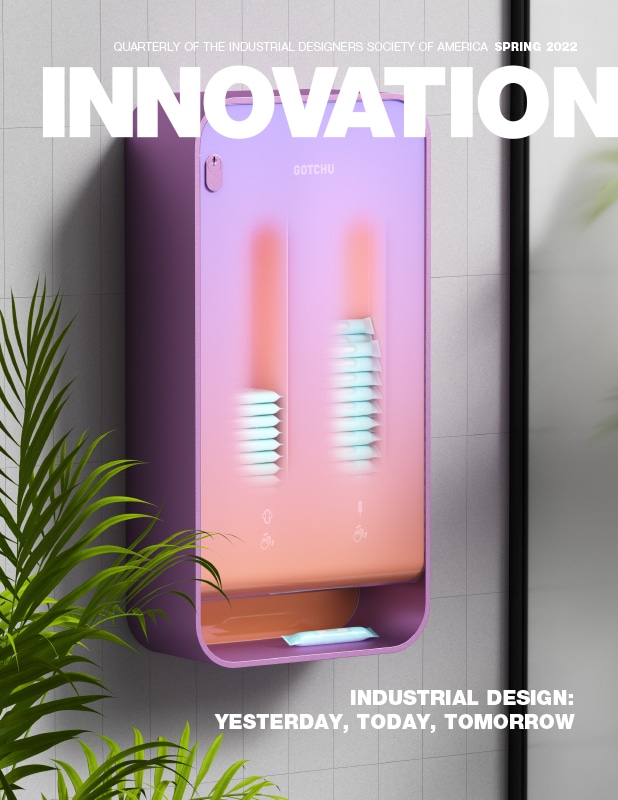
Spring 2022
Article:
Author:
Scott Henderson, IDSA
